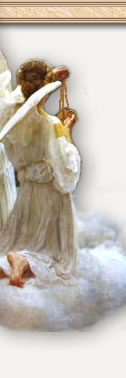




 |
|

|
|
|||||||||||
|
|
|
|
||||||||||||
 |
|
|
||||||||||||
 |
|
 |
|
|||||||||||
|
|
||||||||||||||
 |
 |
|
|
|
|
A Response to Christopher Ferrara I wish to thank Father McLucas for giving me an opportunity to respond to Mr. Ferrara’s article. I do find some serious confusion in the way Mr. Ferrara presents the question of the canonical status of the Society of St. Pius X (SSPX). Obviously the subject treated of in the Tu es Petrus article – attendance at Mass and reception of the sacraments from a SSPX priest – shall find a very different response whether or not one considers the Society of St. Pius X as schismatic. I intend here to deal only with this key question. The Priestly Fraternity of St. Peter was founded in July 1988 by 12 clerics who had been members or associates of the Society of St. Pius X. Why did they leave? They left when Archbishop Lefebvre decided to consecrate four bishops against the express will of the Holy Father. Shortly after its foundation, the Fraternity published a theological essay written by some of its members under the direction of Father Josef Bisig, founding Superior General, called “A Study of Episcopal Consecrations against the will of the Pope applied to the consecration of 30th June 1988 by Archbishop Marcel Lefebvre.” The conclusion of this study is that “the episcopate issuing from the Ecône Consecrations is contrary to the very nature of the episcopate, thus non-Catholic and schismatic.”1 To be in full communion with the successor of Peter, one must be received into communion by him: a refusal entails the absence of communion. Pope Pius IX drew the logical conclusion of this principle: “All these declarations (from Tradition) are so emphatic that we must conclude from them that a man who has been declared schismatic by the Roman Pontiff must cease absolutely to claim the name of Catholic….”2 After Archbishop Lefebvre wrote to the Pope on June 2 that “the time for a frank and efficacious collaboration has not arrived yet” and that he would proceed nonetheless in ordaining several bishops, he received a double admonition clearly warning him of the schismatic character of the consecrations he intended to perform against the will of the Vicar of Christ. First from the Pope himself in his letter of June 9: “With a paternal heart, but with all the gravity required by the current circumstances, I urge you, Revered Brother, not to embark upon a course which, if persisted in, cannot but appear as a schismatic act whose inevitable theological and canonical consequences are well known to you. I earnestly invite you to return, in humility, to full obedience to the Vicar of Christ.” The second admonition is from Cardinal Gantin, Prefect of the Congregation of Bishops, on June 17, 1988,3 which begins to warn him of the excommunication incurred automatically by the ordaining and ordained Bishops when done without papal mandate (canon 1382) and proceeds to say: “Thus, I beg and urge you in the name of Jesus Christ to consider with great attention to what you are about to accomplish against the laws of the holy discipline as well as to the most serious consequences concerning communion with the Catholic church, of which you are bishop.”4 After the Consecrations, those concerned were declared excommunicated on two grounds: first for schism (canon 1364, 1), and secondly for episcopal consecrations made without papal mandate (canon 1382): “Monsignor Marcel Lefebvre, Archbishop-Bishop Emeritus of Tulle, notwithstanding the formal canonical warning of 17 June last and the repeated appeals to desist from his intention, has performed a schismatical act by the episcopal consecration of four priests, without pontifical mandate and contrary to the will of the Supreme Pontiff, and has therefore incurred the penalty envisaged by canon 1364, paragraph 1, and canon 1382 of the Code of Canon Law. Having taken account of all the juridical effects, I declare that the above-mentioned Archbishop Marcel Lefebvre, and Bernard Fellay, Bernard Tissier de Mallerais, Richard Williamson and Alfonso de Galarreta have incurred ipso facto excommunication latae sententiae reserved to the Apostolic See. Moreover, I declare that Monsignor Antonio de Castro Mayer, Bishop emeritus of Campos, since he took part directly in the liturgical celebration as co-consecrator and adhered publicly to the schismatical act, has incurred excommunication latae sententiae as envisaged by canon 1364, 1. The priests and faithful are warned not to support the schism of Archbishop Lefebvre, otherwise they shall incur ipso facto the very grave penalty of excommunication.” The next day the Pope promulgated the Apostolic Letter Ecclesia Dei adflicta given motu proprio (i.e., coming directly from him) where he confirms the excommunication for cause of schism: 1. With great affliction the Church has learned of the unlawful episcopal ordination conferred on 30 June last by Archbishop Marcel Lefebvre, which has frustrated all the efforts made during the previous years to ensure the full communion with the Church of the Priestly Fraternity of St. Pius X founded by the same Mons. Lefebvre. These efforts, especially intense during recent months, in which the Apostolic See has shown comprehension to the limits of the possible, were all to no avail.” 3. In itself, this act was one of disobedience to the Roman Pontiff in a very grave matter and of supreme importance for the unity of the Church, such as is the ordination of bishops whereby the apostolic succession is sacramentally perpetuated. Hence such disobedience – which implies in practice the rejection of the Roman primacy – constitutes a schismatic act. In performing such an act, notwithstanding the formal canonical warning sent to them by the Cardinal Prefect of the Congregation for Bishops on 17 June last, Mons. Lefebvre and the priests Bernard Fellay, Bernard Tissier de Mallerais, Richard Williamson and Alphonso de Galarreta, have incurred the grave penalty of excommunication envisaged by ecclesiastical law.5 In his article, Mr. Ferrara seems to find significant that Bishop Castro Mayer’s excommunication is not mentioned in the motu proprio Ecclesia Dei and seems to conclude that he is thus not excommunicated. We have seen above that he is clearly mentioned in the decree declaring the excommunications for cause of schism (canon 1364) and episcopal consecration without papal mandate (canon 1382). The motu proprio is not a “declaration” of excommunication. Its main objective is to urge the priests and faithful connected with the Society of St. Pius X to remain in communion with the Church and to announce what will be done to facilitate their full communion.6 Father Gerald Murray, in a letter to The Latin Mass magazine,7 made the following comment: Another important criticism I received concerns the question of the possible invalidity of the declaration of excommunication issued by the Congregation for Bishops. A couple of well-versed canonists pointed out something crucial which I neglected to include in my thesis, and which probably led to an incorrect inference on the part of many readers: once the competent authority in the Church, in this case the Congregation for Bishops, has publicly declared a latae sententiae (automatic) penalty to have been incurred, the persons named in that declaration are bound to submit to the public effects of the penalty. They are not free to simply ignore the penalty, alleging reasons why it does not apply to them. They may be sincerely convinced that the penalty was not incurred automatically. They may be convinced that the declaration was invalid. They may even be able to prove their case. But they cannot simply assert this, and then act as though there had been no declaration of excommunication. They must prove their case in an administrative recourse. If they choose not to lodge a recourse, then the matter rests as established by the competent Church authority. They are excommunicated. This presumption in favor of the validity of administrative and judicial acts of Church authority exists in order to guarantee the good order of the society which is the Church. The four bishops consecrated by Archbishop Lefebvre are and must be considered as excommunicated until such time as Church authority withdraws the declaration of excommunication. Mr. Ferrara states that there has been no clear determination of the meaning of the term “formal adherence” in the motu proprio which would make priests and lay adherents schismatic and thus excommunicated. He seems to ignore that the Pontifical Council for Legislative Texts has set up guidelines in 1996 at the request of the Congregation for Bishops after a bishop inquired about the status of SSPX bishops, priests and lay adherents.8 The document was published in Italian in Communicationes, the official review of that Council, but can also be found on the Vatican website. The entire document should be read carefully. Let us quote a few passages. As the motu proprio declares in no. 5 c) the excommunication latae sententiae for schism regards those who “adhere formally” to the said schismatic movement…. [I]t seems to this pontifical Council that such formal adherence would have to imply two complementary elements: a) one of internal nature, consisting in a free and informed agreement with the substance of the schism, in other words, in the choice made in such a way of the followers of Archbishop Lefebvre which puts such an option above obedience to the Pope…. b) the other of an external character, consisting in the externalizing of this option, the most manifest sign of which will be the exclusive participation in Lefebvrian “ecclesial” acts, without taking part in the acts of the Catholic Church….9 6. In the case of the Lefebvrian deacons and priests there seems no doubt that their ministerial activity in the ambit of the schismatic movement is more than evident sign of the fact that the two requirements mentioned above (no. 5) are met, and thus that there is a formal adherence.” 7. On the other hand, in the case of the rest of the faithful it is obvious that an occasional participation in liturgical acts or the activity of the Lefebvrian movement, done without making one’s own the attitude of doctrinal and disciplinary disunion of such a movement, does not suffice for one to be able to speak of formal adherence to the movement.”10 To use Cardinal Ratzinger, Cardinal Castillo Lara, Cardinal Cassidy, and Cardinal Castrillon Hoyos to prove that there is a gray area about the question of whether the Society is schismatic is disingenuous. The decree of excommunication for cause of schism of the Hawaiian six by the Bishop of Honolulu was indeed overturned by the Congregation for the Doctrine of the Faith. In his decree, the Congregation says it does not find evidence of a crime of schism on their part, although it does find some of their activities “blameworthy.” The decree did not overturn the excommunication of the SSPX bishops! (See text in note 10.) Cardinal Castillo Lara has himself clarified his position: In the case of Lefebvre and the four priests consecrated bishops by him, there are two offenses, canonically speaking, that they have committed. The fundamental offense is that of schism, that is, refusing submission to the Roman Pontiff and breaking communion with the Church (canon 751). This offense they had already previously committed. Only that, now, the second offense, that of consecrating bishops, formalizes, in a certain sense and concretizes the first, and makes it explicit.”11 Cardinal Cassidy does not affirm that there is no schism but only that the SSPX is not under his competence, since the Society of St. Pius X does not constitute “another Church or Ecclesial Community in the meaning used in the Ecumenical Directory.”12 The Commission Ecclesia Dei is the one competent here. The fraternal tone of Cardinal Castrillon Hoyos in his last letter to Bishop Fellay is a polite way to speak to other prelates even if they are not Catholic or in full communion with the church. The first part of the letter gives a summary of the first steps in the negotiation process during which the Cardinal had a positive view of the Society: “noting your good will.” The two sentences used by Mr. Ferrara to build his case that the Cardinal does not consider them schismatic are both in the past tense, as though he did not have this impression any longer. They were not intended to deny what all the Church documents already quoted have said but to describe the Cardinal’s impression about the good will of Bishop Fellay at the beginning of the negotiations. Indeed, most of the letter concerns itself with different declarations by various authorities within the Society of St. Pius X having a schismatic and even heretical savor. In reaction to some quotations which indicate that the SSPX is separated from Rome through the fault of Roman authorities and not their own, the Cardinal makes this remark, learned from the study of Church history: “No heretic or schismatic, in the course of history, has declared himself to be wrong. They have always thought that the Church was wrong.” The Cardinal notes also that some of the SSPX clerics do not have “the true faith in the authentic Tradition of the Church.” Bishop Fellay understands correctly the letter of the Cardinal, since he writes: “Now comes the Cardinal in his letter of April 5, one month ago, with a fivefold rebuke.” He terminates the dialogue accusing the Cardinal of duplicity and quoting Archbishop Lefebvre in his letter to the Pope announcing the episcopal consecrations: “The time of a frank collaboration has not yet come.”13 In sum, the Cardinal has gone as far as possible in his dialogue with the SSPX, he has given them the benefit of the doubt, and at first he thought that they sincerely desired to return to full communion. A year later, he has some serious reservations. In conclusion, I shall quote Father Murray : “The Society of St. Pius X and those who frequent their chapels must realize that continuing on a path of defiance and separation from the Holy See, and from the Church in general, will inevitably lead them further and further away from Catholic unity and into undeniable schism. Furthermore, history ominously teaches us how easily schism leads into heresy. We must all pray for the grace of a humble and sincere act of repentance and submission to the Holy See on the part of these brothers and sisters of ours. For the love of God and His Church I urge them to cast aside a separatist spirit, return to full visible unity, and join in the ever-growing movement to renew the Catholic Church by promoting Her sacred heritage and patrimony.”14 Notes 1. This study was essential to convincing this writer that the Consecrations of June 30 were truly schismatic and thus to his deciding to leave the Society of St. Pius X. He joined the Fraternity of St. Peter in June 1989. It is still available in French and German and can be ordered from Fraternity Publications in America. Unfortunately, the study was never published in English although a translation had been made (40 pages, Letter format). This English translation can be obtained free of charge in Adobe pdf format by e-mail publications@fssp.com or by regular mail (donation appreciated!) from Fraternity Publications, P.O. Box 196, Elmhurst, PA 18416. 2. Pius IX, Encyclical Quantus Supra of June 1, 1873, in The Church, #393, St. Paul edition, 1980. We recommend the reading of this whole encyclical, which dispels some of the arguments of the schismatic Armenians. E.g.: they claimed the excommunication “was unjust and therefore null and void” and that there was a state of necessity since “the faithful once deprived of their ministry, would espouse the cause of the heretics.” 3. Congregation for Bishops, Prot. N. 514/74. 4. To be “schismatic” and “not to be in full communion with the Catholic Church” are one and the same thing. 5. Translation from the Osservatore Romano, English edition N. 28 (1047) of 11 July 1988 6. Why is Bishop Castro Mayer not mentioned in the motu proprio? One can only guess! It is perhaps because the motu proprio concerns itself only with the followers of the Society of St. Pius X. 7. Father Gerald E. Murray, Letter to the Publisher, in The Latin Mass Magazine , Summer 1996 pp 54-55. 8. Pontificium consilium de legum textibus interpretandis, August 24, 1996, Prot. N. 5233/96 in Communicationes Vol. XXIX N.2, 1997 “On the excommunication for schism incurred by the adherents of the movement of Archbishop Lefebvre.” An English translation has been published in The Canon Law Society of America Newsletter, N. 115, September 1998 pp 7-9 followed by a commentary of Rev. Gordon F. Read written on July 15, 1998 (pp 9-13). 9. Compare to what Father Peter Scott, U.S. District Superior, is saying to his priests in the Priest Bulletin pp 7-8, March 1, 1999 : “Our faithful, that is Catholics who regularly attend our Masses, should firmly and positively be told that they do not have the right to attend Indult Masses, even if they have no other way of satisfying their Sunday obligation….” 10. That is why Cardinal Ratzinger overturned the decree of excommunication of six people made by the Bishop of Hawaii. “On July 3, 1991, Mrs. Patricia Morley had recourse to this Congregation against the Decree of the Bishop of Honolulu issued on May 1, 1991. His Excellency, the Most Reverend Joseph Anthony Ferrario, with aforesaid Decree declared Mrs. Morley excommunicated on the grounds that she had committed the crime of schism and thus had incurred the latae sententiae penalty as provided for in canon 1364, #1 of the Code of Canon Law. This Congregation has examined carefully all the available documentation and has ascertained that the activities engaged in by the petitioner, though blameworthy on various accounts, are not sufficient to constitute the crime of schism. Since Mrs. Morley did not, in fact, commit the crime of schism and thus did not incur the latae sententiae penalty, it is clear that the Decree of the Bishop lacks the precondition on which it is founded. This Congregation, noting all of the above, is obliged to declare null and void the aforesaid Decree of the Ordinary of Honolulu.” 11. The entire clarification of Cardinal Castillo Lara would need to be read. It has been published in an article written by John Beaumont and John Walsh called “The Story of the Vanishing Schism: The Strange Case of Cardinal Lara” in the March 1994 issue of Fidelity magazine. 12. See The Directory for the Application of Principles and Norms on Ecumenism #4-5, 35-36. 13. Bishop Bernard Fellay, Letter to Friends and Benefactors n. 62, June 7, 2002. 14. Rev. Gerald E. Murray, op. cit. Read Christopher Ferrara's Final Commentary |
|



♦ About The Mass ♦ Resources ♦ How To Help ♦ Contact Us ♦